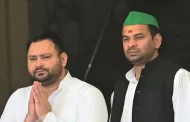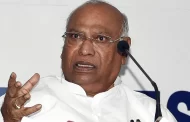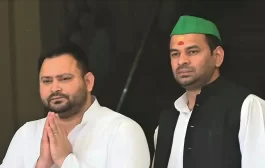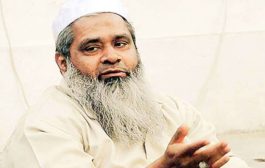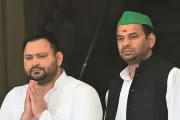BJP president Amit Shah may be good in buying stocks and legislators but no good in assuaging the feelings of distressed farmers, jobless youth, displaced adivasis, oppressed Dalits and Muslims

Voters had proven Bharatiya Janata Party national president Amit Shah wrong in the 2017 Gujarat Assembly elections. He had claimed the BJP would win 150 of the total 182 seats, breaking the Congress party’s 1985 record of winning 149 Assembly seats. Instead, the BJP got 99 seats. Amit Shah has made similar claims, saying the BJP will repeat its 2014 tally in the coming Lok Sabha polls by winning all the 26 seats from Gujarat. No one takes him seriously. The self-proclaimed Chanakya of the BJP may be good at buying scrips on the stock market and legislators in state assemblies to help a minority BJP form governments in states, but Amit Shah is no good in assuaging the frayed feelings of distressed farmers, jobless youth, displaced adivasis, oppressed Dalits and persecuted Muslims whose votes are crucial for winning a Lok Sabha election.
Amit Shah had earned the dubious epithet of ‘General Dyer’ of the Jallianwala massacre notoriety during the pro-quota stir by youth belonging to the Patidar community in 2016-17 when as many as 14 young men were shot dead by the Gujarat Police. Patidar agitation leader Hardik Patel, on the other hand, had earned the uncrowned title of a ‘living martyr’, having spent nearly two years in jail on sedition charge slapped on him by the BJP government. He is campaigning for Congress candidates and is pulling more crowd in his election rallies than BJP’s star campaigners, Prime Minister Narendra Modi and Amit Shah.
Hardik Patel, 25, who joined the Congress in the presence of party president Rahul Gandhi and general secretary Priyanka Gandhi at a rally on March 12, has taken up the cause of small farmers whose wards are suffering the double whammy of exorbitantly expensive higher education and joblessness. The National Crime Record Bureau reported suicides by as many as 709 debt-ridden farmers in Gujarat in 2015-2016. Farm distress has had direct impact on the popularity of the BJP in Gujarat as evidenced in the results of the panchayat elections in 2016 followed by state Assembly elections in 2017.
In the panchayat elections, the BJP lost its control over as many as 24 of the total 30 district panchayat bodies. The 2017 Assembly elections further highlighted the loosening grip of the BJP. In the Assembly polls of 2017, Shah had bragged about winning 150 of the 182 seats for his party. However, the BJP could win just 99, the lowest ever since Narendra Modi had come to power in the state in 2001. The Congress improved its tally to 77 with Rahul Gandhi leading from the front. The Assembly election results also brought to the fore the urban-rural divide in the voting patterns. While the urban areas remained with the BJP, the rural areas moved towards the Congress. Of the 55 seats in the four key cities of Ahmedabad, Vadodara, Rajkot and Surat, the BJP bagged 44 and the Congress only 11.
In rural areas, of the total 127 seats, the BJP managed a mere 55 while Congress and its allies picked up 72. Gujarat’s demography can be divided into four regions – Saurashtra-Kutch, north Gujarat, central Gujarat and south Gujarat. Saurashtra-Kutch accounts for 54 Assembly seats of which BJP had won 35 in 2012 and the Congress 16. In the 2017 elections, the Congress won 30 while the BJP got the remaining 20. This significant dent in the BJP stronghold was mainly due to farm distress and resentment among the Patidar youth and Dalits. The urban-rural divide was also seen in south Gujarat. While the BJP retained its hold over 15 of the 16 seats in Surat, winning three of the five seats in the urban areas of Bharuch and Ankleshwar, and seven of the nine seats in Valsad and Navsari.
The Congress, on the other hand, did very well in rural areas. In north Gujarat, the stronghold of the Patidar agitation, the Congress improved its tally to 23 seats while the BJP notched up 30 seats. Between the 2014 Lok Sabha elections and the 2017 Assembly polls, the BJP’s vote share declined by 10.4 per cent. If the same trend continues during the coming Lok Sabha polls, the BJP is in for a big surprise. According to two former chief ministers, Shankarsinh Vaghela and Suresh Mehta, both formerly with the BJP, the Congress is likely to win between 10 to 12 seats out of the 26 in Gujarat. BJP chief Amit Shah seems to be aware of this. Since the party’s dismal performance in the last Assembly elections, he has been busy engineering defections from the Congress. Just before the 2017 Rajya Sabha elections, 14 Congress MLAs quit the party to join the BJP. In the last six months, five more Congress MLAs quit the party.
Two of the defectors were appointed cabinet ministers within 24 hours of them joining the BJP. By engineering these defections, Amit Shah hopes to wean away caste vote banks to impact the ensuing Lok Sabha polls in Saurashtra and north Gujarat regions. The latest to quit Congress was Radhanpur MLA Alpesh Thakor who is expected to join BJP at an ‘appropriate’ time. Thakore’s loyalists Dhavalsinh Zala and Bharat Thakor are now threatening to quit the party. Though these defections, on the eve of the Lok Sabha election, are seen as a setback to the party, the Congress is all set to start its campaign more vigorously from April 17 with party general secretary Priyanka Gandhi Vadra and senior party leader Navjot Singh Sidhu campaigning in Gujarat. For Priyanka Gandhi Vadra, it will be her first solo election campaign in the home state of Prime Minister Narendra Modi and BJP chief Amit Shah. She had addressed her first public rally in Gujarat, jointly with party president Rahul Gandhi, in Gandhinagar on March 12.
source: NH



